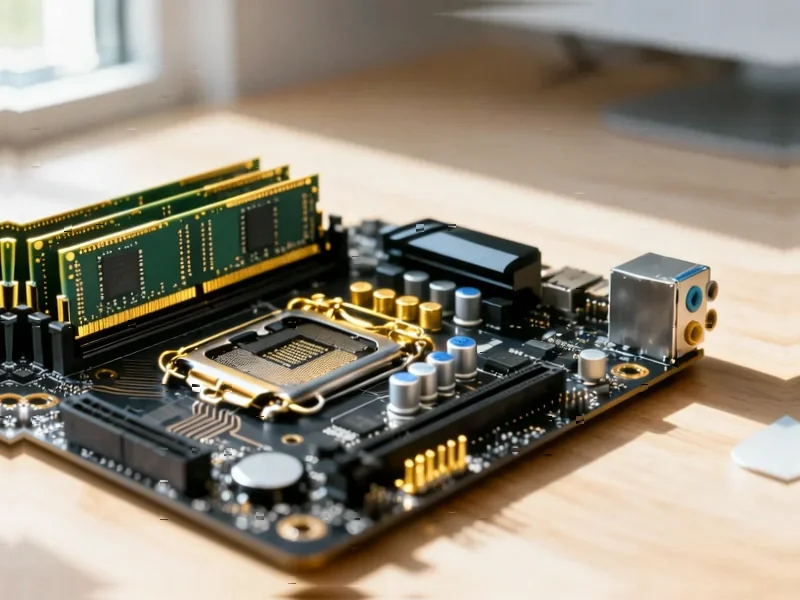According to HotHardware, AMD has issued a clarifying statement about its Radeon GPU driver strategy following confusion caused by the Adrenalin Edition 25.10.2 release notes that originally indicated RDNA 1 (RX 5000 series) and RDNA 2 (RX 6000 series) GPUs would transition to “maintenance mode.” The company’s subsequent blog post on Sunday evening confirmed that owners of these graphics cards will continue receiving game support for new releases, stability optimizations, and security fixes through a dedicated, stable driver branch separate from the RDNA 3 and RDNA 4 optimization path. AMD explained this dual-driver approach enables faster feature development for newer architectures while maintaining stability for older GPUs. This clarification came after initial concerns about shorter support cycles compared to NVIDIA.
The Technical Reality of Dual Driver Paths
AMD’s decision to separate driver development paths represents a fundamental shift in how graphics drivers are architected and maintained. Unlike the traditional monolithic driver model where all GPU generations share the same codebase, this bifurcated approach creates two distinct development streams. The RDNA 1/2 branch will essentially become a “frozen” codebase with selective backports of game optimizations and critical fixes, while the RDNA 3/4 branch can leverage newer DirectX 12 Ultimate features, mesh shaders, and other architectural improvements without being constrained by legacy hardware limitations. This separation allows AMD’s engineers to optimize specifically for each architecture’s memory hierarchy, compute unit configuration, and hardware scheduling capabilities rather than maintaining a one-size-fits-all solution.
What This Means for Gaming Performance
The critical question for existing Radeon owners is whether this “stable branch” approach will impact real-world gaming performance. Historically, when GPUs transition to legacy support status, they often miss out on driver-level optimizations that can significantly boost frame rates in new game releases. AMD’s promise of continued game optimizations suggests they’ll maintain a minimal optimization team dedicated to backporting performance improvements for RDNA 1/2, but the depth and frequency of these optimizations remain uncertain. The company’s announcement emphasizes stability over cutting-edge features, which could mean older cards receive fewer aggressive performance tuning updates compared to their newer counterparts.
The Graphics Driver Support Lifecycle
AMD’s move reflects broader industry trends in GPU support lifecycles, though their approach differs significantly from NVIDIA’s strategy. NVIDIA typically maintains unified driver support across multiple architecture generations for longer periods, which provides consistency but can slow innovation for newer hardware. AMD’s bifurcated approach mirrors what we’ve seen in the mobile industry, where older devices receive security updates while newer models get feature-rich updates. The key differentiator will be how AMD defines “market needs” for the legacy branch – whether they’ll proactively optimize for major AAA releases or only react when performance issues become widespread enough to warrant attention.
Long-Term Implications for GPU Ownership
This driver strategy shift has significant implications for GPU longevity and resale value. If AMD delivers on its promise of continued game optimizations, RDNA 2 cards like the RX 6000 series could maintain strong performance for several more years, extending their usable lifespan. However, if the “stable branch” becomes effectively a security-and-bug-fix-only path, these cards could see performance degradation relative to newer architectures within 12-18 months. The success of this strategy hinges on AMD’s commitment to allocating engineering resources to both branches rather than letting the legacy branch stagnate. For consumers, this creates uncertainty about the true long-term value proposition of AMD graphics cards versus competitors with different support philosophies.
The Hidden Impact on Game Developers
Beyond consumer concerns, this driver strategy affects game developers who must now account for potentially divergent driver behavior across AMD GPU generations. While the separated code paths might simplify AMD’s internal development, they could complicate optimization efforts for game studios targeting multiple GPU architectures. Developers may need to test more extensively across different driver versions, and some advanced rendering techniques optimized for RDNA 3/4 might not perform optimally on older architectures even with driver updates. This fragmentation risk could influence engine-level decisions about which graphical features to implement and how aggressively to push visual fidelity boundaries.




